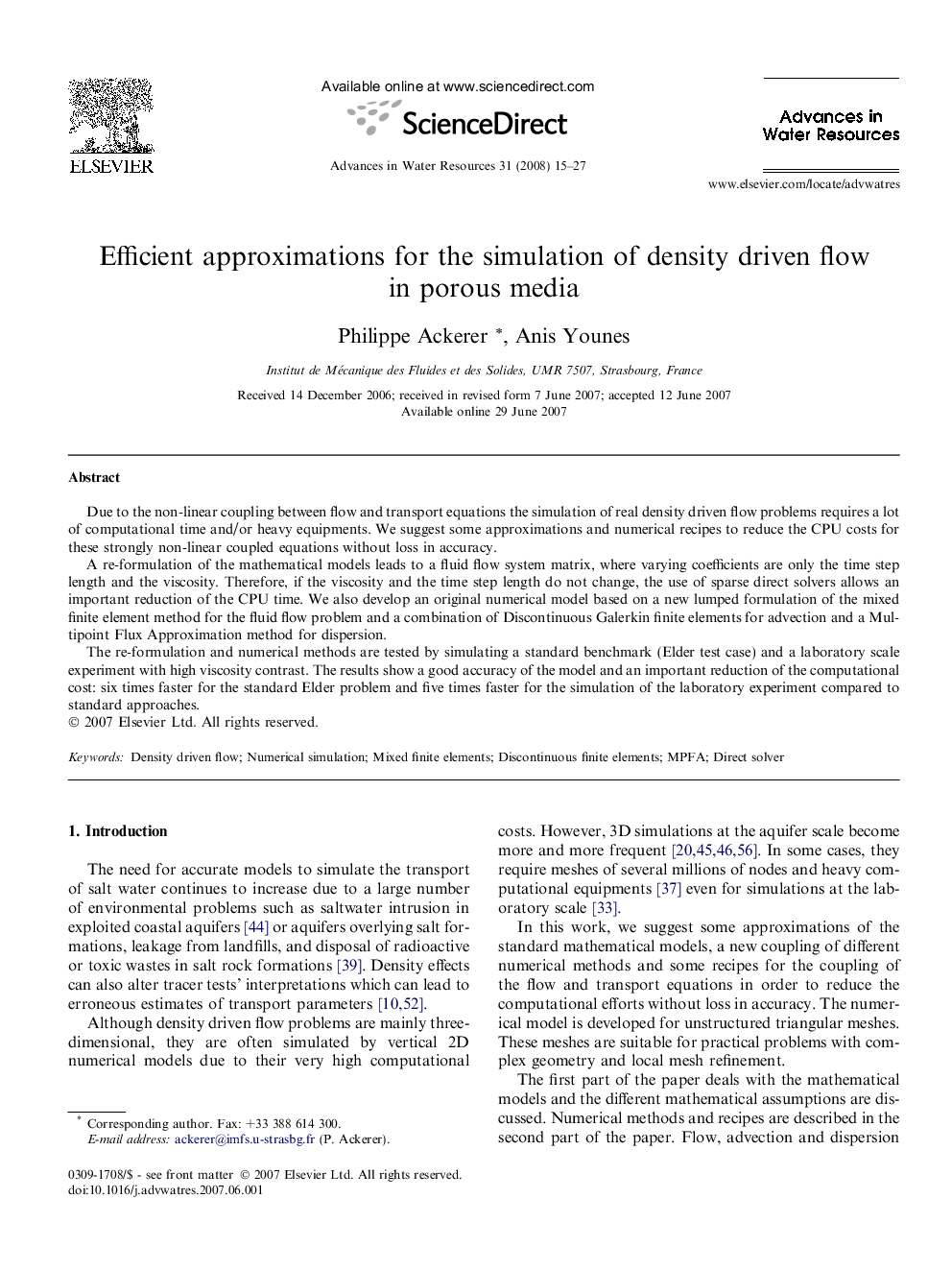| Article ID | Journal | Published Year | Pages | File Type |
|---|---|---|---|---|
| 4526643 | Advances in Water Resources | 2008 | 13 Pages |
Due to the non-linear coupling between flow and transport equations the simulation of real density driven flow problems requires a lot of computational time and/or heavy equipments. We suggest some approximations and numerical recipes to reduce the CPU costs for these strongly non-linear coupled equations without loss in accuracy.A re-formulation of the mathematical models leads to a fluid flow system matrix, where varying coefficients are only the time step length and the viscosity. Therefore, if the viscosity and the time step length do not change, the use of sparse direct solvers allows an important reduction of the CPU time. We also develop an original numerical model based on a new lumped formulation of the mixed finite element method for the fluid flow problem and a combination of Discontinuous Galerkin finite elements for advection and a Multipoint Flux Approximation method for dispersion.The re-formulation and numerical methods are tested by simulating a standard benchmark (Elder test case) and a laboratory scale experiment with high viscosity contrast. The results show a good accuracy of the model and an important reduction of the computational cost: six times faster for the standard Elder problem and five times faster for the simulation of the laboratory experiment compared to standard approaches.
